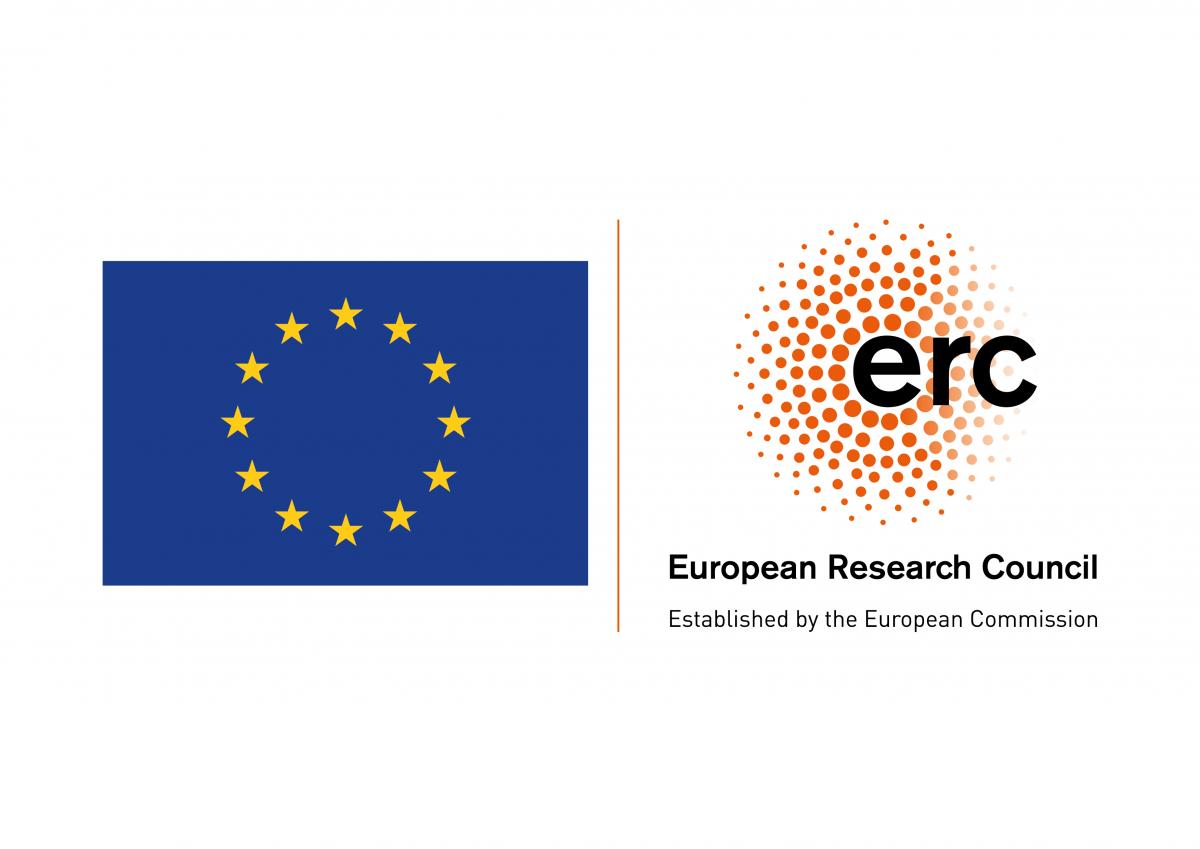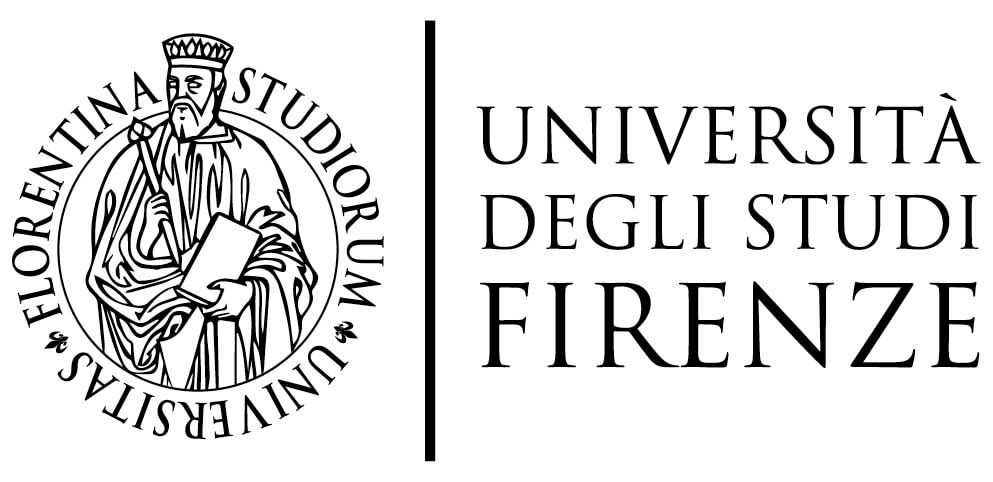Transformations
There are few periods in European history that have affected its social and political development as the period between the beginning of Roman imperial era and its transition to Late Antiquity and the Early Middle Ages, when some of the key fundamental structures that defined political and religious power, imperial power and the papacy, were developed and institutionalised.
Alongside the Palatine-Forum complex and the Vatican, Rome’s Eastern Caelian embodies these changes in its architecture and in the regenerations of its urban scape. Here, political, military and religious powers were materialized by buildings that reflected the notion of imperial and religious power: the large imperial complex of the Severan Horti Spei Veteris, closely controlled by the emperor’s guards that stationed in the Castra Priora and in the Castra Nova Equitum Singularium; the subsequent Constantinian development of the horti into the Sessorian palace and Basilica of the Holy Cross complex to the east and in the newly funded Basilica of the Saviour and Lateran Baptistry complex to the west, and finally, the development of the Episcopal Palace, the Medieval residence of the Pope.
This pattern of political, military and religious transformations intertwined with the subsequent demographic variations, reflecting in an increased presence of shops, workshops and facilities such as bath complexes, in an area previously almost exclusively funerary and residential and likely witnessed changes in property investment, reflecting the increased imperial and later papal involvement in the area.
By a careful reassessment of the archaeology and the incorporation of new data from geophysical survey and environmental analysis, Rome Transformed will assess the urban regeneration of the Eastern Caelian in centuries 1-8 CE by looking at four main questions:
The transformation from rural to urban and the development of elite housing and imperial buildings during the 1st-2nd centuries
Located outside Rome’s pomerium, the Eastern Caelian was used as a cemeterial area at least from the 4th century BCE and featured an otherwise unknown suburban temple dedicated to the Spes Vetus, located nearby modern Porta Maggiore. It is however from the 1st century that elite suburban housing started developing around the Lateran quarter, matched by increasing imperial investment that manifested itself with the construction of public and military provisions, such as the Arcus Neroniani and the Castra Priora. Overall, the Eastern Caelian kept a prominently suburban, residential and funerary nature until the late 2nd century, when Severan investment in the area led to the gradual transformation of the quarter into a military and royal domain.
What happened to the region during the 1st and 2nd centuries is therefore essential to understand the context in which this transformation took place and the project will assess if and how the development of imperial provisions such as water and military infrastructures affected the nature of property development in the district, gradually attracting families that had strong links to the imperial house.
The project will answer three sets of questions. The first one is the nature of land occupation during the 1st and 2nd centuries CE, property development and imperial politics. From the end of the Republic, following the gradual expansion of the city and reflecting its increasing wealth, elite properties interspersed with gardens occupied the peripheries of the city. The Eastern Caelian became one of the city’s most sought-after areas and elite residences occupied Area 1, Area 2 and Area 3: their remains are still visible today in the exposed historic excavations beneath the Lateran cathedral, the Ospedale di San Giovanni and in via dell’Amba Aradam. Another residence lies under the Pontificia Università Lateranense but has been backfilled. From the second half of the 2nd century, rich residences were also built between the Aurelian Walls and the Basilica of Santa Croce. The form and fate of the lavish properties were bound up with imperial politics. Amongst them were the Horti of Domitia Lucilla, mother of Marcus Aurelius and owner of several brickyards. The property has been identified thanks to water pipes found in the area that bore her name and incorporated a residential and a wine production and storage area. To the west of the property was the large property of the Quintilii, the brothers killed by Commodus in 182 CE who then confiscated their properties. It is likely that the property of Domitia Lucilla was also incorporated at some point into the imperial patrimonium.
The second question is how far imperial development of the area with civil and military infrastructure affected the gradual transformation of property ownership. Imperial intervention on the eastern Caelian manifested itself with the construction of civil and military infrastructures that initiated the gradual shift of land occupation and property ownership from private to imperial during the Severan period. During C1-2CE military camps were established in relatively sparsely settled areas at the edges of Rome and military presence was discretely introduced within the city. On the Caelian, Trajan established the imperial horse guards in the Castra Priora Equitum Singularium, likely affecting the predominantly residential and funerary nature of the area and possibly shaping local mobility and demographics. Remains of the barracks have been identified near via Tasso (Area 7) and numerous dedications of the soldiers found beyond the limits of the Castra (CIL, VI, 31138-87) might have belonged to a sanctuary connected to the building.
The third question is how far imperial water provision affected the urban developemen of the quarter in centuries 1-2 CE. The provision of water infrastructure with the construction of the Arcus Neroniani, in addition to an existing, subterranean aqueduct, also marked an important imperial contribution in shaping the area’s development. It is likely that the aqueduct provided water to the Castra Priora and to numerous residences, fountains, nymphaea and cisterns by a network of underground channels and of water pipes that have survived in scattered remains and that will be comprehensively reassessed.
The military and residential monumentalization of the district during the late 2nd-3rd century
The 3rd century represents the moment when the urban fabric of the Eastern Caelian as we see it today was established. In a political moment increasingly dominated by military presence, Septimius Severus made the unusual move to establish a new residence among his soldiers, setting up a suburban villa, known as the Horti Spei Veteris, equipped by him and his successors with spaces for imperial performance and dynastic display. The residence was surrounded by the emperor's guards, settled nearby in the Castra Nova Equitum Singularium that complemented the Castra Priora, doubling the military presence in the area. The castra welcomed people arriving from Rome’s centre, framing the way people accessed the new imperial area and towering over the surrounding buildings with their compact and rational design. We argue that the move transformed the district into a new royal quarter, creating a palace where access to the court from the city was militarily controlled. The construction of the imperial residence and of the Castra Nova had also likely a profound impact on the district’s social composition and demography, making it necessary to provide public infrastructure for an increased population, such as the three Severan baths complexes in the Lateran Quarter and near the area of Santa Croce.
The decision to establish a residence in this portion of the city may have been influenced by ideological reasons, including the presence on the Eastern Caelian of the maternal home of Marcus Aurelius, to whom Septimius Severus claimed descendance through a posthumous adoption. It is also possible that the emperor’s decision was affected by more strategic motives, such as the possibility to secure tight control over infrastructure that was essential to the city’s maintenance and survival. Seven out of eleven of Rome’s aqueducts converged ad Spem Veterem, near porta Maggiore. Controlling Porta Maggiore meant to be able to control the water provision for half of the city. That this was not just a remote possibly is shown by the fact that the water supply of the Castra Praetoria was cut off during clashes between the populace of Rome and the soldiers in 238 CE (SHA, Max. et Balb. 8.4; Herodian, 7.12.3‑7). Though the camp itself lay north of the eastern Caelian, its water supply originated at the Porta Maggiore.
The process of transformation of the quarter from suburban to urban was completed at the end of the 3rd century, when the construction of the Aurelian walls incorporated the region into the new religious and administrative limits of the city, affecting the district’s mobility and laying the foundations for the Constantinian renewal of this portion of the city.
In order to assess the centrality of the Caelian in Severan dynastic ideology and to discuss the impact of the political and military regeneration of the quarter during the 3rd century, the project will tackle four main questions. The first is how far the construction of the royal and military citadel transformed the nature and character of the district, by looking at the evidence provided by the now isolated surviving structures tied together by a plan of extended geomorphological analysis in the areas between properties.
The second question is the impact of water provision, management and distribution and their strategical and ideological implications on the political and military regeneration of the eastern Caelian during the 3rd century and it will discussed through a reassessment of the existing tracts of the Arcus Neroniani, comprehensively restored during the reign of Septimius Severus (CIL VI1259), and of Severan water infrastructures, such as bath complexes and the cisterns newly established in the area. Alongside architectural analysis, geophysical investigation, environmental analysis on sediments, together with the 3D modelling of the Severan quarter will provide the necessary foundation to support our discussion on the physical, spatial and visual relationships between water infrastructures, water management, control and distribution in the area and to assess the role played by aqueducts and thermal complexes in defining the imperial control over the area.
The third question is how far the Horti Spei Veteris, the Castra Nova and the Castra Priora were tied together in a unified urban project and reflected the planning of a new royal quarter. The buildings have been traditionally discussed apart, but we argue that to fully understand the political and military implications of the Severan development of the Eastern Caelian we need to investigate the buildings as part of a coherent urban program. To do so, the project develops a large program of geophysical investigation that will hopefully allow to tie in areas that have been so far discussed in isolation.
The fourth question is how far the construction of the Aurelian Walls in (271-275 CE) transformed the political and military role of the Eastern Caelian and how they shaped the way the district was used and accessed during the following centuries, by looking at how the walls transformed the nature of the quarter from suburban to urban, affecting the area’s topography and mobility; how they affected the nature of the imperial residence, the use of its spaces and its visual impact in the newly shaped district and how they responded to the existing structures of the Castra Nova.
The religious and political regeneration of the area in the early 4th century
In the early 4th century the Eastern Caelian underwent its greatest transformation, one that was going to change the political and religious landscape of Rome, with profound consequences on the relation between imperial and religious powers and on the transformation of the city from an imperial capital to the religious centre of Europe and of the Western world.
Constantine dismantled the Castra Nova and its annexes and donated the land to the Church, initiating the construction of the Lateran Basilica and of the Baptistery. The royal presence in the new temple was manifest in the fastigium, a pediment supported by four bronze columns, located in the Basilica and surmounted by silver statues. As the new seat of the imperial family (Liber Pontificalis,34.1) the imperial property of the Horti Spei Veteris, called Palatium Sessorianum, was restored and provided with its dynastic temple, as the Severan large hall was turned into a basilica dedicated to the Holy Cross, the signum that Constantine associated to his military victory over Maxentius at the Battle of the Milvian Bridge.
The extent of the early 4th century transformation of the district was huge. For those who accessed the Eastern Caelian from the city, the impression was that the imperial family was now living among the gods: the Lateran Basilica and the Basilica of the Holy Cross now framed the way people viewed and interacted with the imperial family.
The archaeological assessment of the 4th century transformation of the Eastern Caelian, alongside non-invasive geophysical investigation and the development of a 3D visualization of the quarter, will help evaluating three sets of questions. The first one is to understand the ideological implications of the urban transformation of the district and the relationship between imperial dynastic power and religious patronage. From the second half of the 3rd century CE the emperors gradually changed the way they staged their legitimation performances (only four out of seven triumphal celebrations held in Rome between 262 and 312 CE included the Capitoline Hill in their itineraries) as city gates, porticoed roads, circuses and palaces increasingly became the urban backdrop for imperial dynastic celebrations. The adoption of imperial ceremonial by religious authorities by the late 4th century meant that urban processional routes were now important aspects of both secular and religious ceremonies. How this reflected in the development of the 4th century Eastern Caelian will be answered by assessing the layout, extent and accessibility of the Sessorian Palace and of the Lateran Basilica and Baptistery complex and by looking at the spatial and visual relationship between the Basilica of the Holy Cross and the Lateran Basilica, through an extended programme of non-destructive geophysical investigation.
The second question is how the transformation of the area affected the development of the existing elite properties. The dissolution of the corpus of the Equites Singulares and the destruction of their barracks meant that at least 2000 soldiers with their horses left the district, likely having a profound effect on the demography and social composition of the quarter. On the other side, an increased presence of the emperor’s family, likely resulted in elite property investments that can be recognised in the Late Antique development of the house under Corsia Mazzoni in the Ospedale di San Giovanni and in the nearby house under the INPS building, in via dell’Amba Aradam but also likely affected the commercial facilities that had inevitably developed during the 3rd century occupation of the district. The archaeological and architectural reassessment of the tabernae framing elite properties in Area 2, to better assess their function and chronology, will hopefully cast a light onto the social implications of the imperial regenerations in the area.
Finally, the 3D visualization of the 4th century Eastern Caelian will also help tackle questions about the choices behind the construction of the Lateran Basilica. It is traditionally believed that practical reasons, such as proximity to the aqueduct, and more subtle political reasons, such as the remoteness of the area, far away from the pagan political centre of the Forum, or the presence of the equites singulares, might have been behind the choice of the place where to build the Lateran Basilica. The project seeks to answer the question by looking at the building within its urban context and in relation to the spatial and visual relationship with the elite residences, the barracks, the Aurelian Walls, the aqueducts and the Sessorian Palace. It will look for example at the legacy of military infrastructures in order to assess if and how the Castra Priora still had a role in shaping the way in which people approached the quarter and reached the Sessorian Palace or were dismantled together with the Castra Nova.
The emergence of new architectures of religion, power and governance from Late Antiquity to the Early Medieval Period
Despite the political and religious transformations that occurred between Late Antiquity and the early Middle Ages, the royal connotation of the Eastern Caelian endured a lasting life, as the popes established their official residence near the Lateran Basilica, in the episcopal palace (called Episcopium during the second half of the 7th century and Patriarchium from the 7th until at least the end of the 9th century). Every morning the Pope and clergy moved from the Lateran to one of 38 designated stational churches. It was a ritual that daily reiterated the centrality of the Lateran and with it of the Eastern Caelian not only in the Rome of the early medieval period, but also in Latin Christendom, then and until the end of the Middle Ages.
The episcopal palace became one of the most important centres of power of the early middle ages and the model for 8 century European political and ecclesiastical courts. Here pope Leo III (795-816) built two magnificent reception halls for banquets, court hearings and ceremonies, stressing the role of the pope’s religious power over Christianity but also his leadership over temporal power, in a confrontation between dynastic and religious power that culminated only with the crowning of Charlemagne as emperor of the Holy Roman Empire in 800 CE. It is the Patriarchium that Charlemagne ultimately tried to imitate, by modelling his palace in Aachen on the Lateran episcopal palace and calling it Lateranis (Monumenta Germaniae Historica, Scriptores, 1.303; Monumenta Germaniae Historica Leges, 3, Concilii aevi Merovingici, 2.1, 464, 765), and by assembling in it the statue of what was then believed to be a she-wolf, actually a bear, and the bronze monument to Theodoric, in imitation of the statues of the Capitoline She Wolf and of Marcus Aurelius that were displayed at the time at the Lateran.
Of this profoundly important complex, not much is visibletoday, as most of it lies buried beneath the Lateran Square, the open area to the East of the Basilica and underneath the Scala Santa. Little also we know of the archaeology of the early medieval Sessorian Palace. Despite some of the buildings to the north of the Basilica of the Holy Cross were razed to the ground by Honorius in the 5th century, the palace remained a space for public meetings until probably the early 6th century (Liber Pontificalis, 126.2) and its name was still recalled in early medieval texts such as the De locis sanctis and Einsiedeln Itinerary (c. 800).
Most of the early Medieval remains found in the Eastern Caelian have been until now discussed separately and previous attempts to reconstruct a topography of the early medieval Eastern Caelian have relied mainly on literary and epigraphical evidence. A multidisciplinary approach to the study of the early medieval transformation of the Caelian offers a great potential for the understanding three sets of questions. The first is the nature of the area in the 6-8 centuries and how far the landscape of early Medieval Eastern Caelian was characterized by a series of imposing monuments (the places for worship) among crumbling, ancient monuments. The impact of the 410 sack by the Goths might not have been as bad as usually believed and the damage might have primarily involved the looting of valuable objects, rather than the destruction of structures. While the 5th century social fabric of the Western Caelian seems to have been affected, little is known about the extent to which the eastern Caelian was affected by the sack.
The second question will be to understand the visual and spatial relationships between the Lateran and the Sessorian quarter, how they paralleled or diverged from previous, Late Antique models and to discuss their social and cultural implications. In order to do so, the project will test the suggestion that portions of the Episcopal palace lay under the building of the Scala Santa by examining the existing archaeological evidence and assessing it against the results of GPR survey carried out outside the Scala Santa on the road that runs between the building and the Lateran Cathedral. Moreover, the results from the GPR carried out in Area 5 will cast a light on buried evidence between the Lateran and the Sessorian quarters.
The last and third question will look at the role of water features as part of the architectural display of power in the Lateran complex, by reassessing the identity and nature of some of the structures discovered underneath the Lateran baptistry and identified as the 5th century monumental nymphaeum built by Pope Hilarus, as part of a program of restoration and enlargement of the Lateran Baptistry (Liber Pontificalis).
Thea Ravasi








